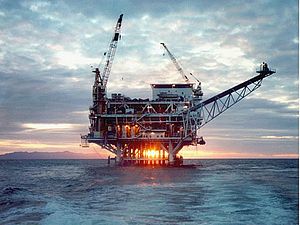The Singapore government is contemplating extending “assistance” to the city-state’s marine and offshore engineering sector, announced Trade and Industry Minister S. Iswaran on Monday. Although no concrete plans have been revealed, the minister was quick to stress that government help “cannot be a panacea.”
This announcement comes amidst reports revealing the extent of damage wrought to the industry by low oil prices and a dismal macroeconomic environment. According to Bloomberg, Singapore-listed shipping giants Keppel Corp, Sembcorp Marine, and other Singapore-listed service companies have had more than $24 billion of total market value wiped out by low oil prices. The marine and offshore engineering sector has been hardest hit, with cut backs on upstream projects such as rig-building activities, which have been the mainstay of Singapore’s marine and offshore growth. Traditionally one of Singapore’s main pillars of growth — accounting for 1.8 percent of GDP in 2011 — it is now one of the worst-performing industries in 2016, logging a 29 percent decline over the first eight months of 2016.
This prolonged oil rout appears to be the worst slump in Singapore’s marine sector since the 1984 oil crisis, where Singapore saw three out of its five rig-building yards cease operations. Nevertheless, the consolidation that occurred helped strengthened Singapore’s position in the marine and offshore businesses, led by Keppel and Sembcorp groups.
Given the volatility of the offshore oil and gas industry, Singapore’s sustained dominance stems from its ability to be ready for the next upscale by building capabilities for the long term. As such, the Singapore government has earmarked S$107 million (US$77 million) to help develop a new research center for the industry. This will take the form of a joint venture between the Agency of Science, Technology and Research (A*STAR) and the National University of Singapore (NUS), the Technology Center of Offshore and Marine Singapore (TCOMS).
Due for completion in 2019, the R&D facility will allow industry partners, technology partners, regulators, and the research community to develop technology and infrastructure for future marine and offshore systems. One such facility is the Deepwater Ocean Basin, which will be capable of simulating harsh ocean environments at depths of up to 3,000 meters. It is hoped that such research will help push the boundaries of marine and offshore operations in the future.
Faced with lackluster overall growth, the fate of Singapore’s economy hinges on the ability of the struggling offshore industry to dig deep and ride out the storm.

































